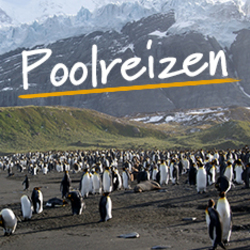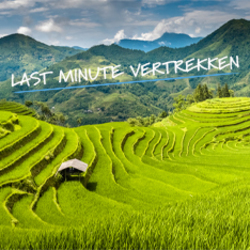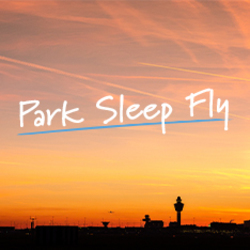Maak kans t/m 5 januari
BekijkActivities
- Culture
- Natural Wonders
- Cultural Wonders
- — Visit the Imperial Cities of Rabat, Meknes, Fez and Marrakech — Tour the Roman ruins of Volubilis and the impressive Todra Gorge — Ride a camel through the red dunes of the Sahara — Walk into the High Atlas mountains and experience a traditional hammam — Relax in the charming fishing port of Essaouira
Food
-
1
Start Marrakech
Welcome to the Red City, a pulsating destination moving at a frenetic pace. Our riad, however, is a pocket of peace with a central pool (ideal for a post-flight dip) and relaxed air. Depending on your arrival time, you can either rejuvenate at the accommodation or start exploring Marrakech. Jemaa el-Fna, the busy food stall-filled central square, is a five-minute walk away. There will be a welcome briefing at the riad this evening or tomorrow morning, depending on when most of the group arrives. Accommodation: Riad Tresor de Marrakech or Riad El Habib (or similar)
-
2
Visit Hassan II Mosque; to the capital Rabat
This morning, we drive for three hours to Casablanca, a modern, commercial seaport city, to visit the Hassan II Mosque, one of the largest mosques in the world. After, we drive two hours to Rabat for lunch, the political capital of Morocco but second in importance to Casablanca. Although mostly modern, Rabat has an excellent old quarter that we take time to explore. Accommodation: Hotel le Musee (or similar)
-
3
Explore the Roman site of Volubilis and Meknes; to Fez
We strike out from Rabat this morning over the northern plain towards the one-time capital of Meknes, a drive of around three hours. The scenery changes as the land becomes more cultivated, this being one of the most fertile areas in Morocco. Arriving in Meknes, we meet our guide and wander the narrow streets of the old city, exploring the souk and perhaps bartering for souvenirs. In the afternoon, we take a short drive to the largest and best-kept Roman ruins in Morocco: Volubilis, once a large Roman town and now a Unesco World Heritage site. After, we continue our journey to the ancient city of Fez, where we spend two nights. Accommodation: Riad Tafilalet, or Riad Fez Tresor (or similar)
-
4
Guided tour of Fez
This fascinating city is the intellectual and religious centre of Morocco. Founded more than 1,000 years ago, Fez has many mosques and madrasas (theological colleges) including the ninth-century al-Karaouine University, whose architecture resembles that of Moorish Spain. The medina in Fez is one of the largest in the world: an immense warren of souks, home to thousands of artisans with their tiny shops opening onto narrow alleyways. Our city guide walks us through different sections of the souk, including those selling leather, brass and copper. Of course, no visit to Fez is complete without a visit to the tanneries. Outside the medina we visit the Jewish District (mellah), the exterior of the Royal Palace and drive to a panoramic viewpoint over the city. Accommodation: Riad Tafilalet or Riad Fez Tresor (or similar)
-
5
Drive to Merzouga on the edge of the Sahara
We have a long journey today: approximately 10 hours, including plenty of stops and superb scenery. We venture over the Middle Atlas mountains, down through the picturesque Ziz Valley to the Hamada, a flat, stony desert gradually approaching the spectacular golden dunes that comprise Erg Chebbi. We stay in an auberge (inn) on the edge of the dunes, allowing us to climb one for sunrise tomorrow. Accommodation: Auberge Yasmina (or similar)
-
6
Walk among the dunes; camel trek; free time
There is time today to explore the largest sand sea in Morocco or to relax in the shade of a palm tree by the dunes. The sand sea is famed for having pink tones that take on a spectacular rose colour at sunset. In the late afternoon, we enjoy a classic Saharan experience: a 90-minute camel trek through the dunes (it is also possible to walk), before watching the sun sink below the horizon. We then return to our auberge for dinner. Accommodation: Auberge Yasmina (or similar)
-
7
To Skoura via Todra Gorge
After breakfast, we head towards the little town of Skoura, which is nestled on a beautiful palm grove and located near the city of Ouarzazate. En route, we explore Todra Gorge and the picturesque oases within (journey time: approximately four hours). Following the Road of 1,000 Kasbahs for approximately two more hours, we see impressive ancient kasbahs nestled in palm groves. Accommodation: Chez Talout or Kasbah Ait Benhadda (or similar)
-
8
Skoura, the palm grove capital of Morocco
There is an option to take a one-hour drive to Toundout Valley and enjoy a four-hour guided hike crossing an Amazigh village and Imi-noulawen valley, where we learn a little of their culture. Alternatively, relax in and around the lodge. Skoura will certainly offer peace and relaxation with various walks through palm groves and past kasbahs. Accommodation: Chez Talout or Kasbah Ait Benhadda (or similar)
-
9
Journey to Imlil village via Ait Benhaddou ‘ksar’
Leaving Skoura, we rejoin the main road and drive west along the Road of 1,000 Kasbahs via the desert city of Ouarzazate and onto the well-preserved ksar (fortified village) of Ait Benhaddou. This Unesco World Heritage site is one of the most spectacular in the Atlas and a location for several Hollywood films including Gladiator (2000). We then continue our drive through the High Atlas Mountains via the Tizi n'Tichka Pass, with a variety of scenery to enjoy on our way to the village of Imlil. Accommodation: Toubkal Garden or Riad Atlas (or similar)
-
10
Walking in the High Atlas; evening hammam
We start our day with an optional walk to explore the area. From Imlil, we stroll past a variety of fruit trees including cherries, apricots and quince (if it's the right season, you can even grab a hanging walnut). We follow a small irrigation channel and cross paths with mules as we pause beside a tranquil waterfall. Our gentle hike continues for approximately 50 minutes until we reach the Amazigh village of Aroumd. We spend the rest of the day at leisure, strolling around the village and observing the women carrying bundles of firewood and crops on their backs, while children play on the small bridge nearby. This evening, we visit the village hammam – a truly authentic experience and terrific fun. It is very much a traditional hammam and you may mix with the villagers, which further adds to the experience. A standard treatment with soap and scrubber is included but it is customary to give a tip of 20 dirhams (US$2). Refreshed, we return to the riad for our final dinner in the mountains. Accommodation: Toubkal Garden or Riad Atlas (or similar)
-
11
Over the High Atlas Mountains to Essaouira
After breakfast, we have a scenic drive over the High Atlas Mountains to Marrakech. The scenery is spectacular and there are some wonderful mountain views as we go. We stop at a women's cooperative argon oil farm, where you can see the trees growing, get a demonstration of the production process and have the opportunity to purchase products. Our journey finally brings us to the flat arid plains of Marrakech, and then onwards to the pretty seaside town of Essaouira. Accommodation: Riad Ben Atar or Al Madina (or similar)
-
12
Free day in Essaouira
We have a free day in Essaouira, an old Portuguese fishing port overlooking the Atlantic Ocean. The settlement dates to the 15th century but the present town was constructed around 1760 by Sidi Mohammed ben Abdullah, who needed a base from which to suppress a revolt from Agadir. Today, the town is extremely relaxed and the whitewashed houses with painted shutters, artisan workshops, boatyards and fishermen provide a marked contrast to the desert, kasbahs and cities we have visited so far. Our hotel is in the heart of the old walled city, where we have plenty of time for shopping in the souks or strolling along the beach. With many pleasant cafes and some outstanding seafood restaurants, there is plenty of choice for our evening meal. Accommodation: Riad Ben Atar or Al Madina (or similar)
-
13
To Marrakech; guided tour including Bahia Palace, the Saadian tombs, finish in Djemma el Fna
After breakfast, we drive back to Marrakech. In the afternoon, we enjoy a guided tour of this amazing city. Our guide takes us to the Bahia Palace and the Saadian tombs, ending in Djemaa el Fna, where the town becomes a maze of bustling bazaars, palaces and mosques. It is worth seeing this renowned landmark in the evening, when it comes to life with people visiting food stalls, juice sellers, snake charmers and acrobats. Accommodation: Riad Tresor de Marrakech (or similar)
-
14
Free day in Marrakech
Today is free and there is no shortage of things to do in Marrakech. You might wish to visit Koutoubia, the largest mosque in the city, or venture through the souks and old streets of the medina. After bartering for souvenirs, we have time for a short visit to the Koranic School and Museum of Marrakech. After, you can unwind by taking a 30-minute ride on a calèche (a bright green horse-drawn carriage) to the Jardin Majorelle. These tranquil gardens are decorated throughout in indigo and were once owned by French fashion designer Yves Saint Laurent. For lunch, we highly recommend the Amal Women's Training Centre and Moroccan Restaurant, which we support in their cause to empower women from disadvantaged backgrounds. They are a non-profit organisation dedicated to training their students to become self-sufficient and improving their quality of life through acquiring new skills in a professional restaurant setting. For a superb traditional Moroccan meal and the opportunity to support this worthy cause, do pay them a visit. This evening, it's common for the group to enjoy a final meal together on Djemaa el Fna. Accommodation: Riad Tresor de Marrakech (or similar)
-
15
End Marrakech
The trip ends after breakfast, though if you’d prefer a little more time to explore Marrakech, speak to your sales representative about extending your stay.



































